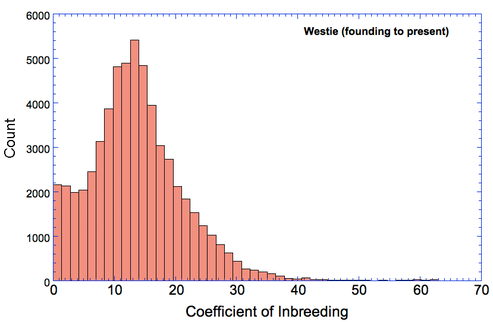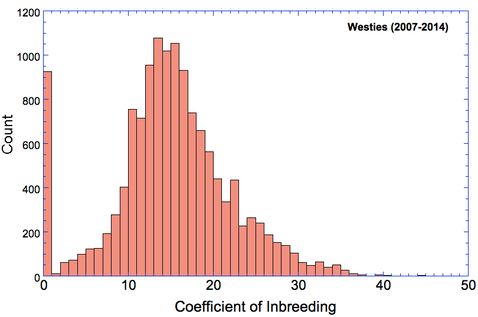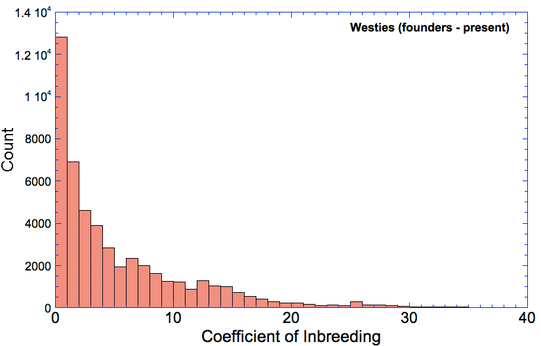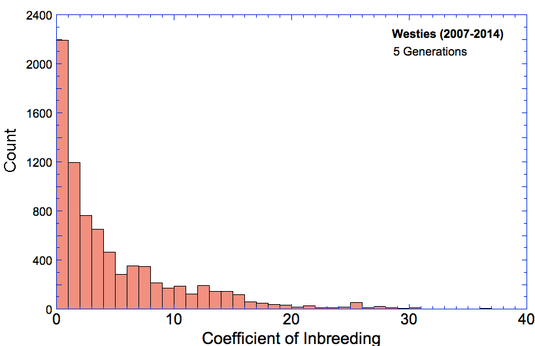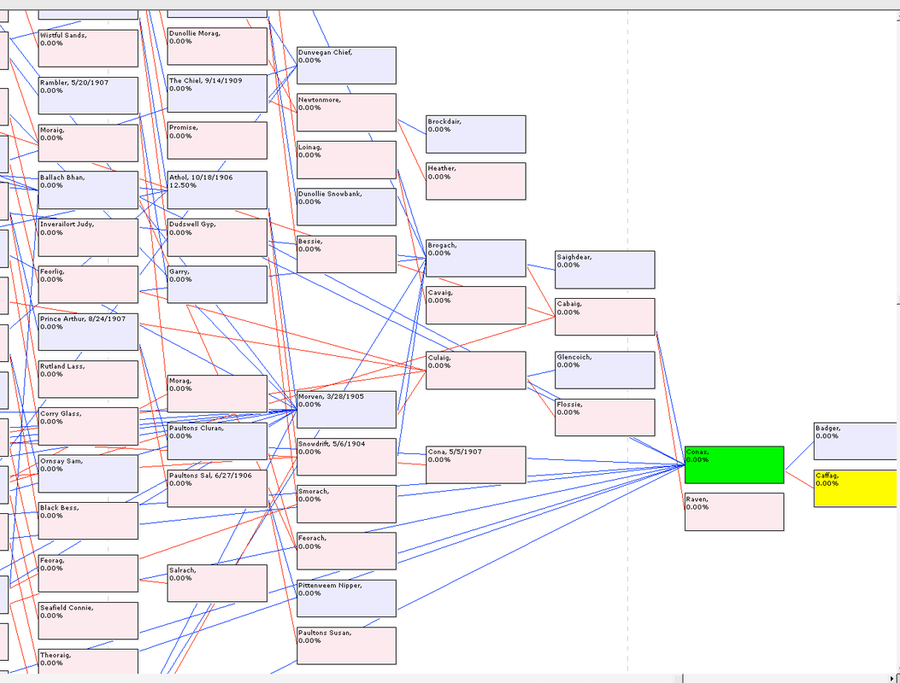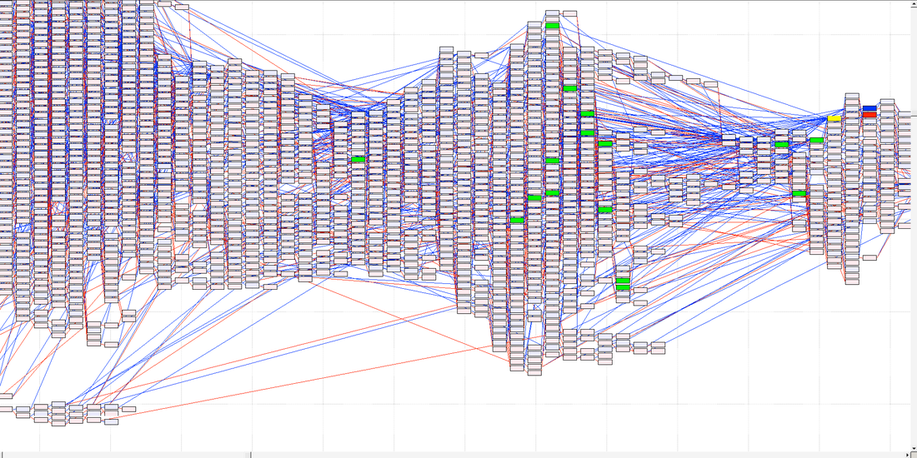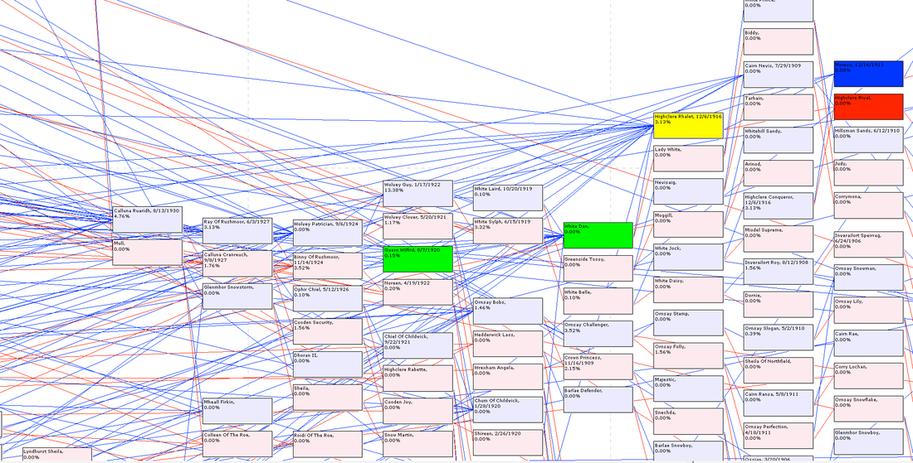West Highland White Terrier
***** Preliminary Analysis using unedited database *****
Database 16 April 2015 (J Collins)
Westies were split from Scotties and Cairns, so the "first" generation of Westie data assumes unrelated founders when of course they weren't. Also, there is lots of missing parent data in the early years, so there will be a large overestimation of the number of founders and subsequent generations will underestimate the true COI by whatever the "actual" level of breeding was in the Westies declared as founders.
There is LOTS of missing data for parents (about 24,700 dogs missing at least Sire ID). Missing data will result in UNDERESTIMATES of inbreeding coefficient. From the data for the "current" population (2007-2014), it looks like about half the population has COI > 12.5% (half-sib parents).
There are at least 80+ generations in the pedigree database, with 82,900 dogs.
The database contains 1,600 dogs with COI from 30% to 70%; about 200 are > 40%, most before DOB of 2000 (i.e., 1980-90s).
It would appear there are significant bottlenecks as in other breeds, in the 1920s and again around WWII, but much less marked than the Cairn and Scottie (in the UK at least, where population size was less than the other two breeds until after WWII).
Westies were split from Scotties and Cairns, so the "first" generation of Westie data assumes unrelated founders when of course they weren't. Also, there is lots of missing parent data in the early years, so there will be a large overestimation of the number of founders and subsequent generations will underestimate the true COI by whatever the "actual" level of breeding was in the Westies declared as founders.
There is LOTS of missing data for parents (about 24,700 dogs missing at least Sire ID). Missing data will result in UNDERESTIMATES of inbreeding coefficient. From the data for the "current" population (2007-2014), it looks like about half the population has COI > 12.5% (half-sib parents).
There are at least 80+ generations in the pedigree database, with 82,900 dogs.
The database contains 1,600 dogs with COI from 30% to 70%; about 200 are > 40%, most before DOB of 2000 (i.e., 1980-90s).
It would appear there are significant bottlenecks as in other breeds, in the 1920s and again around WWII, but much less marked than the Cairn and Scottie (in the UK at least, where population size was less than the other two breeds until after WWII).
Frequency histograms of coefficient of inbreeding, calculated on all generations. For all dogs (left), and dogs born 2007-2014 (right). (Values of 0% were mostly deleted as probably due to missing parent data.)
Frequency histograms of coefficient of inbreeding, calculated on FIVE GENERATIONS of pedigree data.
I checked a half dozen or so pedigrees and all share these same "founder dogs". Are these the first "known" Westies? Can we link this with a Cairn database?
